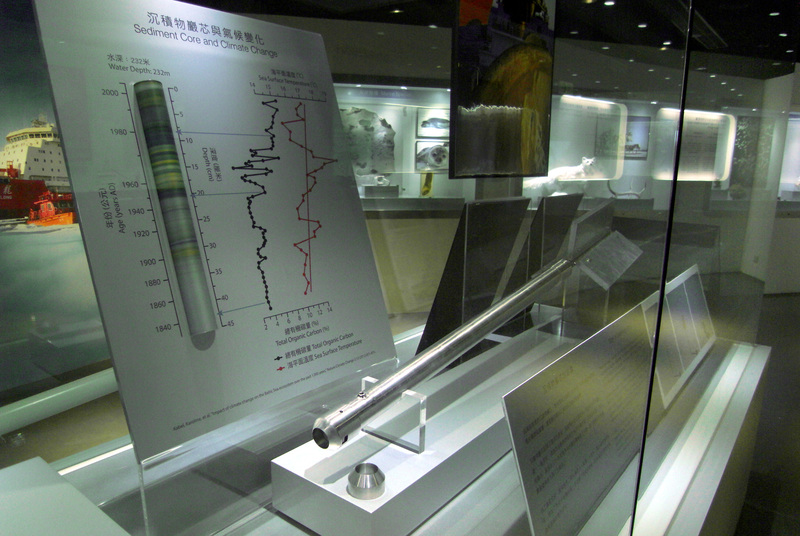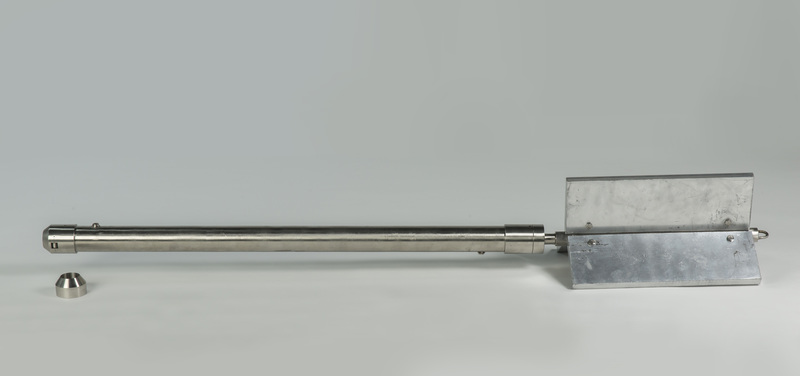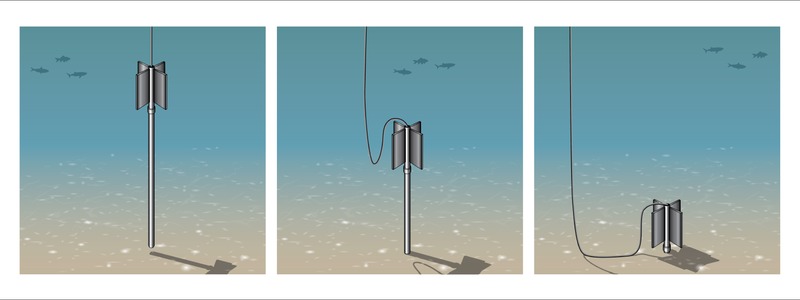Drilling Deep Down to Solve the Secrets of the Planet

Sometimes the best solutions are also the simplest.
Gravity corers like the one now on display at the Jockey Club Museum of Climate Change at CUHK have been used for more than a century to generate a detailed record of the sediment layers at the bottom of the world’s oceans. But with several record-breaking surveys this decade alone, their deployment has blossomed in recent years.
For good reason. Scientists can use the corer to collect samples of the ocean bed that act as a time capsule window on the world. The layers of mud and fossils provide a physical “map” of the ocean’s history.
The gravity corer, essentially consisting of a metal pipe or core tube that drills into the subsurface, is so named because of the way it is deployed. Attached to a wire chain, it is winched via gravity to the bottom of the ocean, where it drills into the sea bed. It then extracts layers of sediment from the mud.

Since sediment generally gathers slowly, even a small core of a few metres in length can represent hundreds of years of history. One experiment off the Portuguese mainland allowed scientists to reconstruct the history of climate change back as far as 5 million years ago. It showed evidence of four ice ages over that period.
German researchers invented the gravity corer at the very start of the last century. They deployed corers to collect several two-metre long cores during the German expedition to the South Pole, which took place from 1901 to 1903.
Their modern use took another leap forward when U.S. scientists drilled the sea-sediment cores in 1961 near Guadalupe Island, off the coast of Mexico. The experiment, dubbed Project Mohole, ran until 1966, collecting samples by drilling through the oceanic crust and into the Earth’s mantle.

Subsequent experiments have seen gravity corers deployed in the Mariana Trench, the deepest place on the planet, to study continental drift. Another project studied the fault slip near the axis of the Japan Trench, which caused the earthquake and subsequent tsunamis that hit northeastern Japan in 2011.
In 2012, the Japanese scientific drilling ship Chikyu set a world record by drilling down 2,111 metres below the seafloor off Japan’s Shimokita Peninsula and obtaining rock samples. Scientists have been using the samples to improve their understanding of the carbon cycle by studying deep-sea coal layers and the presence of natural gases. They are also investigating the evolution of life on Earth by studying the metabolic function and genetics of seabed microbes.
The Xuelong, China’s largest polar-research ship, has drilled into the seabed on multiple missions to both the Arctic and Antarctic. Scientists have examined the marine mud samples generated by the experiments for evidence of pollution and global warming. That is achieved by measuring the amounts of chemical compounds such as methane and carbon dioxide at different moments in history, and at different depths.
The gravity corer is a simple but robust piece of equipment that, while heavy and awkward to deploy, is extremely easy to use once in place. It requires little maintenance, meaning the cost of using it stays low—but the results it provides are priceless.
by Alex Frew McMillan






